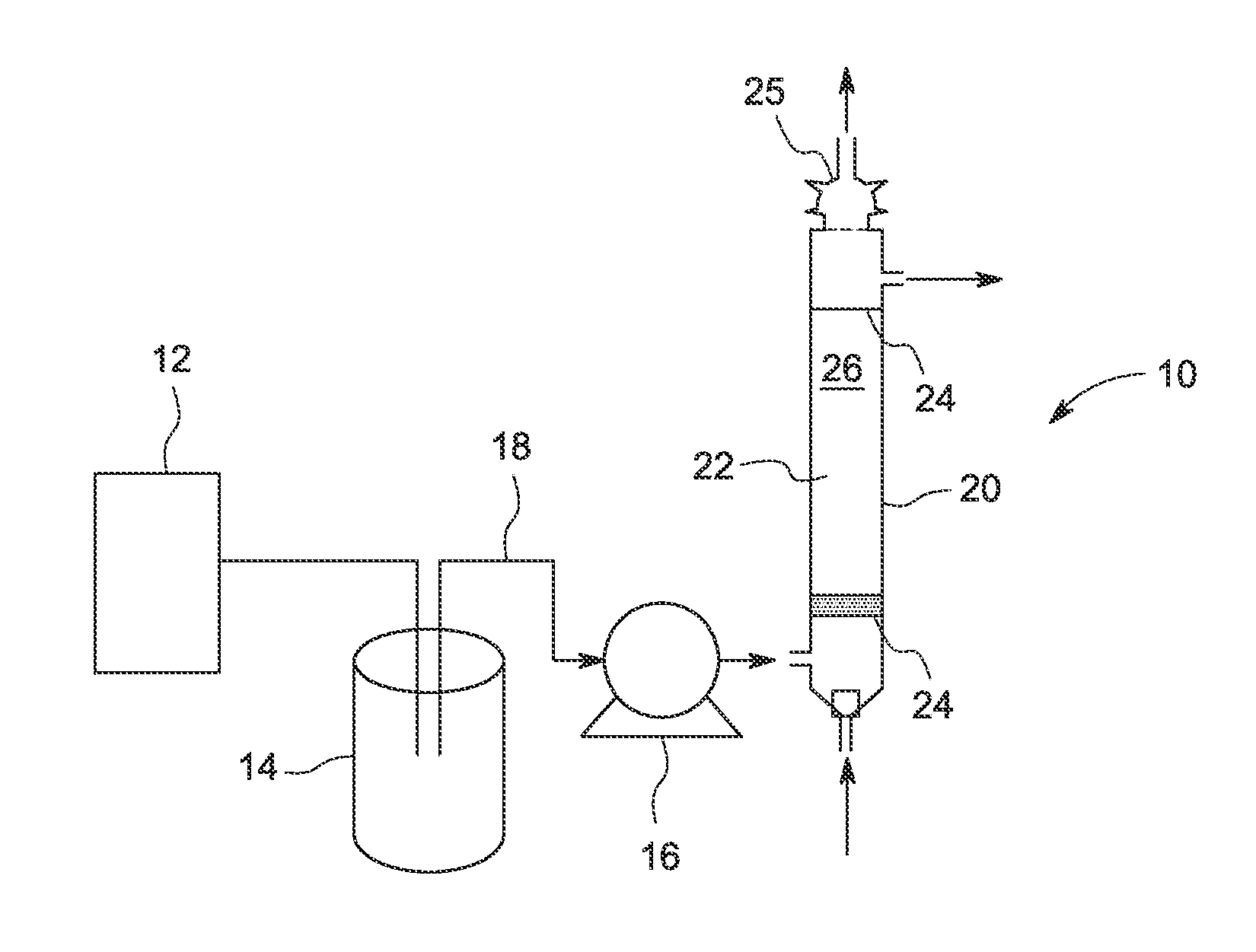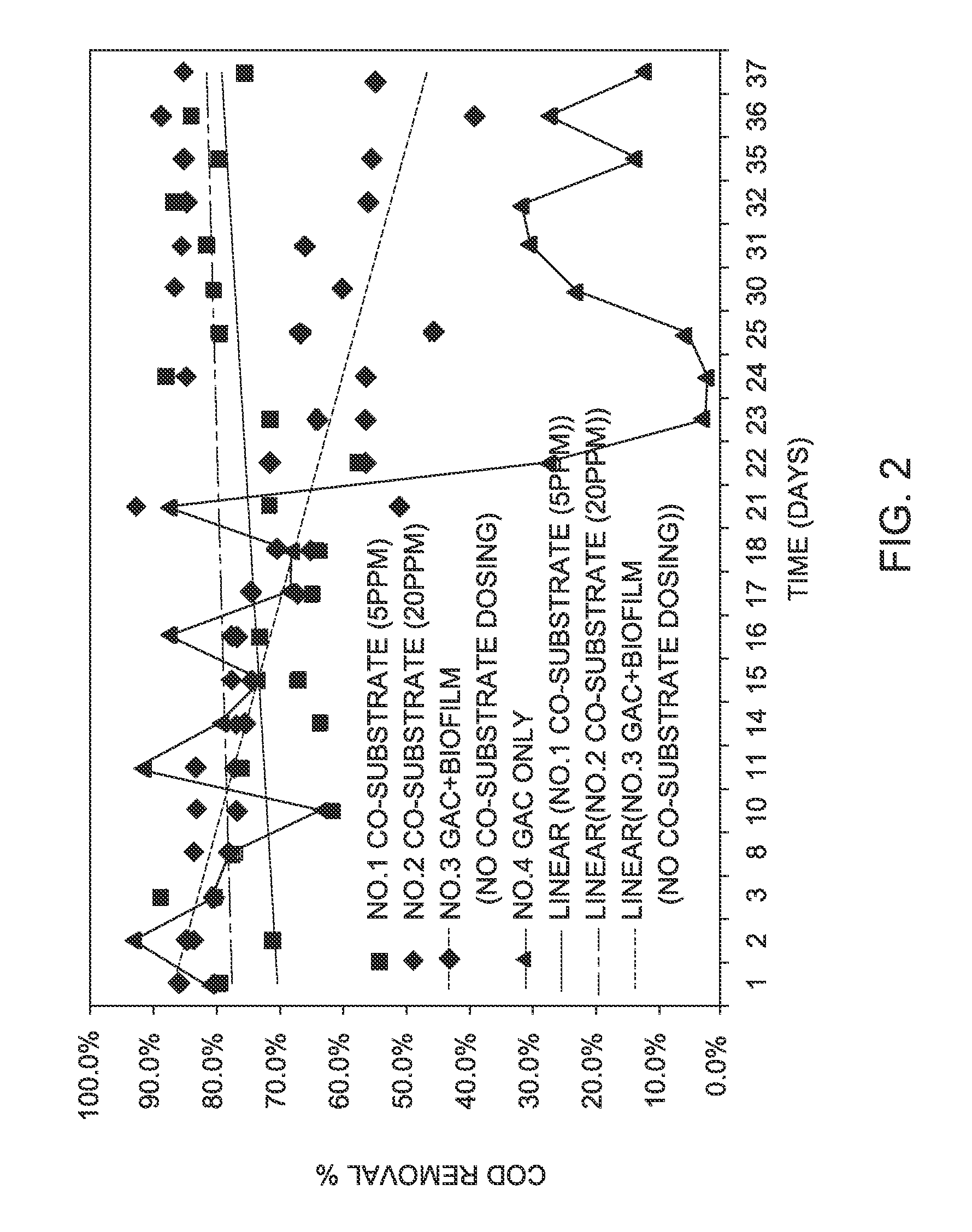Method of reducing residual recalcitrant organic pollutants
a technology of organic pollutants and recalcitrant chemical oxygen, applied in the direction of sustainable biological treatment, biological water/sewage treatment, treatment water, etc., can solve the problems of destroying fish and other aquatic life, posing a direct threat to human beings and animals, and stream becoming incapable of exercising self-purification processes, etc., to achieve easy biodegradable organic compounds, reduce recalcitrant chemical oxygen demand, and enhance biofilm formation
- Summary
- Abstract
- Description
- Claims
- Application Information
AI Technical Summary
Benefits of technology
Problems solved by technology
Method used
Image
Examples
example 1 — 5
EXAMPLE 1—5 PPM CO-SUBSTRATE
[0034]For Example 1, the reactor (No. 1) had GAC as the carrier material, the microorganism mixture above, and a co-substrate. The influent wastewater was dosed with 5 ppm phthalic acid (C8H6O4) as the co-substrate.
example 2 — 20
EXAMPLE 2—20 PPM CO-SUBSTRATE
[0035]For Example 2, the reactor (No. 2) had GAC as the carrier material, the microorganism mixture above, and a co-substrate. The influent wastewater was dosed with 20 ppm phthalic acid (C8H6O4) as the co-substrate.
example 3 — 5
EXAMPLE 3—5 PPM CO-SUBSTRATE
[0038]For Example 3, the reactor (No. 5) had volcanic rock as the carrier material, the microorganism mixture above, and a co-substrate. The influent wastewater was dosed with 5 ppm phthalic acid (C8H6O4) as the co-substrate.
PUM
| Property | Measurement | Unit |
|---|---|---|
| retention time | aaaaa | aaaaa |
| retention time | aaaaa | aaaaa |
| solubility | aaaaa | aaaaa |
Abstract
Description
Claims
Application Information
 Login to View More
Login to View More - R&D
- Intellectual Property
- Life Sciences
- Materials
- Tech Scout
- Unparalleled Data Quality
- Higher Quality Content
- 60% Fewer Hallucinations
Browse by: Latest US Patents, China's latest patents, Technical Efficacy Thesaurus, Application Domain, Technology Topic, Popular Technical Reports.
© 2025 PatSnap. All rights reserved.Legal|Privacy policy|Modern Slavery Act Transparency Statement|Sitemap|About US| Contact US: help@patsnap.com



